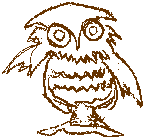
The Jurchens (or Jürchens or Juchens or Ju-chens or, in Chinese, Nǚzhēn 女真) were a people dwelling in what is today the northeastern region of China. They were speakers of a language classified with Tungus, a subdivision of the Mongolian-Tungus family, a division of the Altaic family of languages that also includes Turkish. They emerged in history as vassals of the Chinese Liáo 辽 Dynasty (period 16) of the Qídān 契丹 or Tartars or Tatars (Dádá 鞑靼), a different Altaic language group broadly distributed across Siberia and Central Asia.
But nobody really likes being a vassal, and in 1127 the Jurchens conquered the Liáo state and even pushed south into the Sòng 宋 (period 15b) territory, driving its government southward from the capital at Kāifēng 开封 in the Yellow River Valley to Hángzhōu 杭州 in the Yangtze Valley. Effectively, the Jurchens conquered much of north China, governing it as the Jīn 金 Dynasty (period 18, AD 1115-1234). Because of the linguistic similarity —both groups were Turkic-speaking— the Jurchens are lumped by many authors with the Qídān, whom they conquered.
Like all political régimes, the Jīn Dynasty came to an end, although the Jurchens continued to exist. Four hundred years later —on October 20, 1635— the term “Manchu” was assumed by a politically ambitious subdivision of the Jurchens in order to differentiate themselves from other Jurchens.
The word “Manchu” apparently had been used earlier in Jurchen history as a name for descendants of one particular ancestor. However, the 1635 decision to extend it to a politically energized subgroup was more a quest for a brand name than an association with a particular prior leader, it appears. It was under this name that the self-designated subgroup sought, successfully, to conquer China once again and install a Jurchen/Manchu dynasty. (Based on the sounds, the name was transcribed into Chinese as Mǎnzhōu 滿洲, literally “full continent.”)
In a purely Jurchen context, “Manchu” is not an ethnic term (depending on just what one means by “ethnic”), but rather a political one. On the other hand it is not like a political party, since it is firmly anchored in rights of membership by birth.
The contrast between Manchus and Hàn 汉 Chinese was far more “ethnic” than the contrast between Manchus and other Jurchen peoples, since Jurchens spoke a very different language from Chinese. And certainly the two groups thought of themselves as quite different. Indeed, an alternative Chinese translation of the name is even Mǎnzú 滿族, “Mǎn tribe,” since the syllable zú refers to lineages, tribes, or ethnic groups and makes more sense from a Chinese perspective.
For Chinese history, it is important that the people who founded the Qīng 清 Dynasty (period 21, A.D. 1644-1911) came from this group, called themselves Manchus, and were regarded both by themselves and by Chinese as “non-Chinese.” The many Qīng-Dynasty rebellions against the state typically included its “non-Chinese-ness” as one of the reasons why it should not be in power.
Throughout the Qīng Dynasty, imperial decrees were promulgated in bilingual Chinese and Manchu versions, a custom which continually underlined the difference, since written Jurchen/Manchu was quite different in appearance from Chinese.
When the Japanese invaded China in the early twentieth century —after the fall of the Manchu dynasty and the establishment of a republic— they differentiated off a separate puppet state, called Manchuko (Chinese Mǎnzhōuguó 满洲国, “Land of the Manchus”) in northeastern China. (The region is still often referred to as “Manchuria” in English, a usage which antedates the state of Manchuko.) The Japanese briefly installed the pretender to the Qīng Dynasty throne as the emperor of Manchuko.
Today the Mǎnzú are one of the officially recognized “national minorities” of the Communist state, officially somewhat exceeding ten million in 2010, mostly in Láoníng 辽宁 Province. However, it is said that today fewer than a hundred people actually can speak Manchu. The official Mǎnzú national minority is Chinese-speaking and effectively indistinguishable from the Hàn 汉 majority. (I have been unable to learn when they stopped speaking Jurchen.)
The surname of the Manchu royal family was Àixīn-Jiàoluó 爱新觉罗 (Manchu: Aisin-Gioro, Japanese: Aisin-Kakura), which still occurs as a surname in northeastern China today.
The English term “Manchuria” is today considered inappropriate by some Chinese as appearing to imply that the region is not entirely part of China. The politically correct term, both in Chinese and in sinified English, is “the northeast.” At the same time, it is not unusual for Chinese from other areas to view the region and its inhabitants with a certain disdain for being not quite authentically Chinese.
Content Revised: 2023-05-30
Software Last Modified: 2025-02-04
Search term: "manchu" (Debugging)